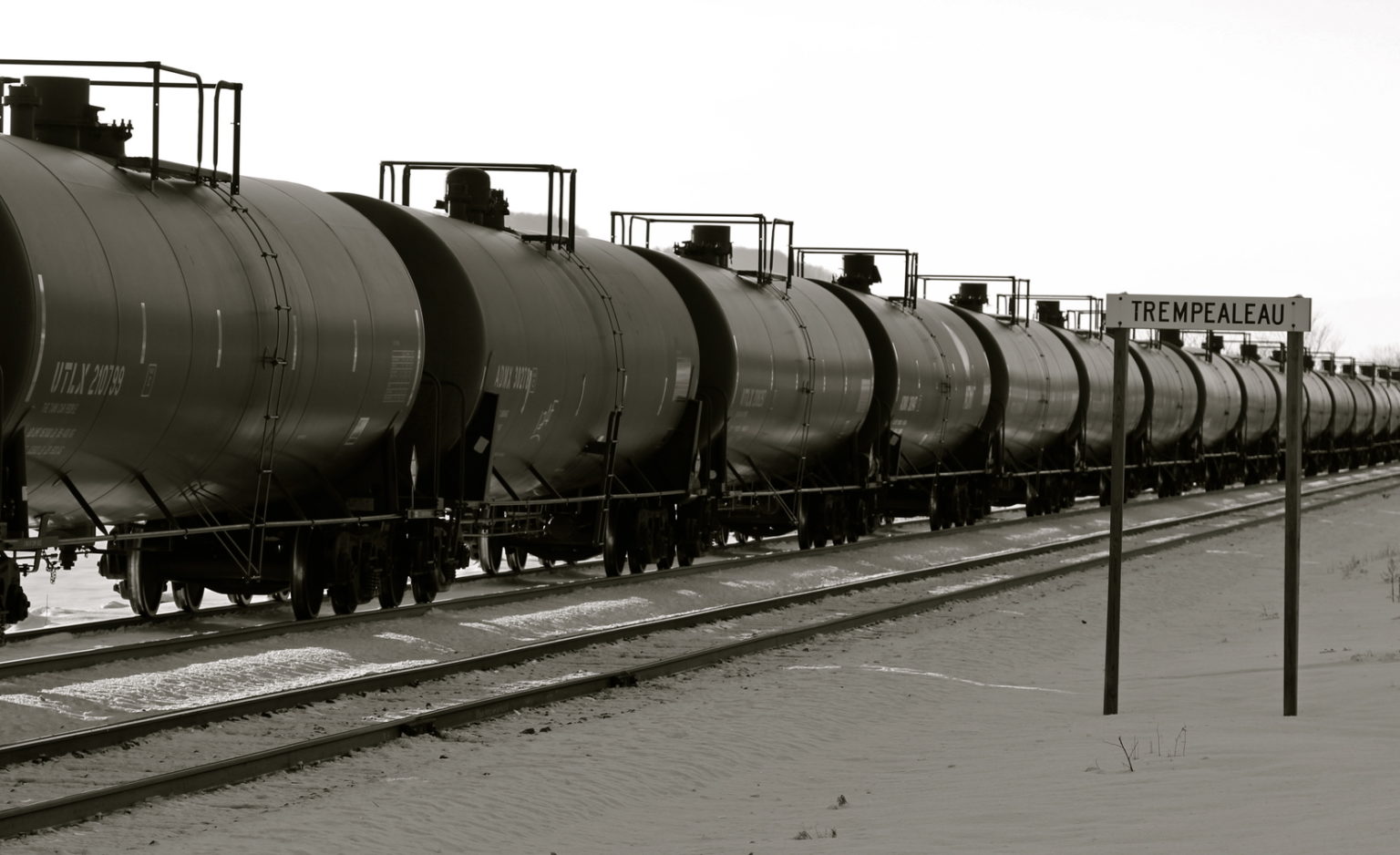By Steve Horn and Justin Mikulka
One of the arguments often made for building more oil pipelines is that they will lead to fewer trains hauling oil, with proponents further positing that pipelines are safer than oil trains.
With oil now flowing through the Dakota Access pipeline (DAPL), some analysts and industry lobbyists have predicted that there will be a significant reduction in oil-by-rail traffic from the Bakken region in Montana and North Dakota. That prediction has come despite the fact that Dakota Access owner Energy Transfer Partners actually owns an oil-by-rail facility connecting to the pipeline in Patoka, Illinois, with major Bakken producers such as Hess Corporation saying 30 percent of their oil will still move via rail.
“It is going to certainly shake up the existing transportation modes,” Ron Ness, president of the North Dakota Petroleum Council, recently told the Bismarck Tribune.
As DeSmog also noted, the Dakota Access project website itself touts that the pipeline will serve the purpose of “greatly reducing the risk of train accidents.”
“Numerous studies have shown that pipelines are safer than shipping oil by trucks or rail,” reads the website. “DAPL will replace 100- to 120-car trains that carry crude oil every day from North Dakota — greatly reducing the risk of train accidents and spills.”
Dakota Access will, without doubt, take much of the oil obtained via hydraulic fracturing (“fracking”) from North Dakota’s Bakken Shale off of the tracks. When the pipeline is fully operational, it is expected to move 470,000 barrels per day of Bakken crude to Gulf of Mexico refinery markets, or about half the oil produced in the Bakken.
So what about the other half of the mathematical equation? Look East — and West — for answers.
“When you add all that up, the only place you can pull that from is rail,” Trisha Curtis, co-founder of PetroNerds LLC, an energy analytics and advising firm based in Denver, Colorado, recently told the Bismarck Tribune.
Eastside, Westside
While Gulf Coast refineries stand to gain from the Dakota Access pipeline, the same cannot be said of those situated on the East and West Coasts.
“Although volumes of crude shipped by rail will decline as Dakota Access comes online and term rail shipping contracts expire, barrels will still move on trains to regions with low pipeline connectivity,” industry analysis group Genscape wrote in an October 2016 report. “Refiners on the U.S. East and West coasts have limited options for sourcing domestic crude, as most of the pipeline development spurred by the so-called U.S. shale revolution pointed to the refinery-rich Gulf Coast.”
Two major oil-by-rail offloading facilities proposed for the West Coast, both in California, have recently been shut down by local activists: the Phillips 66 project in San Luis Obispo and the Valero facility in Benecia. Despite these setbacks, the proposed facilities depict the industry’s long-term plans for moving Bakken oil to the West via rail.
Another project, co-owned by the companies Tesoro and Savage, is hubbed in Vancouver, Washington. It would be the largest oil-by-rail facility in the country, with an offloading capacity of 360,000 barrels of oil per day. However, much like the two projects in California that were denied permits after years of strong public opposition, the Vancouver project also is meeting resistance with one public meeting drawing over 1,000 people attending to voice their opposition.
In 2015, a Tesoro executive explained to CNBC why projects like this are being pursued by the industry.
“It’s incredibly important to the West Coast, because we don’t have pipeline access. We have no other transportation means,” Keith Casey, executive vice president of operations for Tesoro, told the network. “So when you look at where the crude oil through the shale revolution is actually coming from, we don’t have the capability to get it to our refineries.”
Another advantage of the West Coast: its proximity to Asian export markets. Since Congress lifted the U.S. crude oil export ban at the end of 2015, crude oil exports have exceeded expectations and confirmed the Asian market’s thirst for U.S.-produced crude, now being exported at record levels.
A False Dichotomy
While true that fewer oil trains translate to lower risks of derailment and accompanying oil train explosions, moving through pipelines also means higher risks of large oil spills. Contrary to industry talking points, the reality is that pipelines spill more oil than oil trains.
“Overall, oil spills [occur] more frequently with pipelines than rail cars, according to data from the Pipeline and Hazardous Materials [Safety] Administration (PHMSA),” Reuters has reported. “For example, in 2015, there were 252 pipeline spills reported to PHMSA involving crude oil, versus 44 for the rail industry. The year prior, the frequency of spills at pipes was about 62 percent greater than rail, the data shows.”
Another reality: the pipeline vs. rail dichotomy has morphed into an industry Trojan horse used to cloak the use of both modes of fossil fuel infrastructure. The industry, in short, will continue to use both modes of transportation moving forward. The drilling rig count and production numbers have already increased in the Bakken shale region since President Donald Trump signed off on Dakota Access, according to Reuters.
“One of Dakota Access’ repeated arguments is that the pipeline will reduce shipments of oil by rail, which it claims is a more dangerous and expensive way to transport oil,” the Iowa Sierra Club wrote in a 2014 regulatory filing as the pipeline was being proposed in Iowa. “However, Dakota Access presented no evidence to substantiate the argument that the pipeline will reduce shipments of oil by rail.”
Main image: Oil is moved via rail from the Bakken oil fields in western North Dakota through Trempealeau, Wisconsin. Credit: Roy Luck, CC BY 2.0
Subscribe to our newsletter
Stay up to date with DeSmog news and alerts






